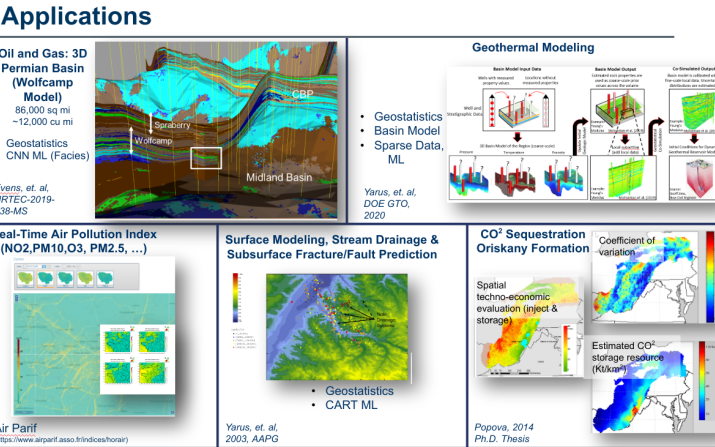
Jeffrey Yarus serves on panel at national conference

At the Department of Energy’s CarbonX Summit, Research Professor Jeffrey Yarus was an invited panelist speaker.
Yarus's presentation, “Advancing Technologies in Computational Earth Model: Spatial Modeling in the Near Surface, Surface and Subsurface,” was part of the “Carbon Engineering: Subsurface Modeling and Visualization” panel. He spoke about the size, shape, orientation, composition and internal arrangement of computational earth models, which are quantitative representations of the earth’s near surface, surface, and/or subsurface. Computational earth models are built from a variety of data sources. He also spoke about the progress that has been made with technology, particularly the move towards high performance distributed computing and the integration of data science.
Industry technical challenges for digital model research include model resolution, computational power, data access, and sparse or missing data. To meet the challenges, Yarus suggests redesigning software to fit newer systems and services; gridless, static and dynamic automatic and real-time modeling; and making the space of uncertainty more inclusive.
Yarus mentioned that modeling CO2 injection and the spatial penetration of injected carbon dioxide often requires information about reservoir properties that are unknown or oversimplified. For example, cap and container characterization (faults, fractures, facies, petrophysics) is not often done in 3D for lack of data and cap, and container characteristics post injection are not updated with respect to petrophysics, chemistry and geomechanics.
Other members of Yarus’s panel were Grant Bromhal, a senior research fellow at National Energy Technology Laboratory in Pittsburgh, Pa., and Shannon Katcher, executive director of digitalization and data at Gas Technology Institute in Chicago, Ill. The moderator was Cheryl Ingstad, director of the DOE’s Artificial Intelligence & Technology Office.
Yarus has been researching quantitative statistical methods applied to geoscience data and computational earth modeling for over 40 years. His main research interests include near surface, surface, and subsurface modeling; modeling with sparse and missing data; spatial modeling/geostatistics; data analytics and machine learning; and statistics. He came to CWRU in 2019 after retiring from Halliburton Technology, where he where he built the modeling software used by the company today and still serves as a consultant. He is a graduate of College of Wooster and University of South Carolina.
The CarbonX Summit was the seventh in the Department of Energy’s InnovationXLab Series, which has a goal of showcasing the assets of national laboratories. In addition to panels featuring researchers from around the country, the event also included networking opportunities, national lab showcases, national lab media library exhibits, and a keynote address from DOE Deputy Secretary Mark W. Menezes.
The virtual event drew attendees from around the United States.
